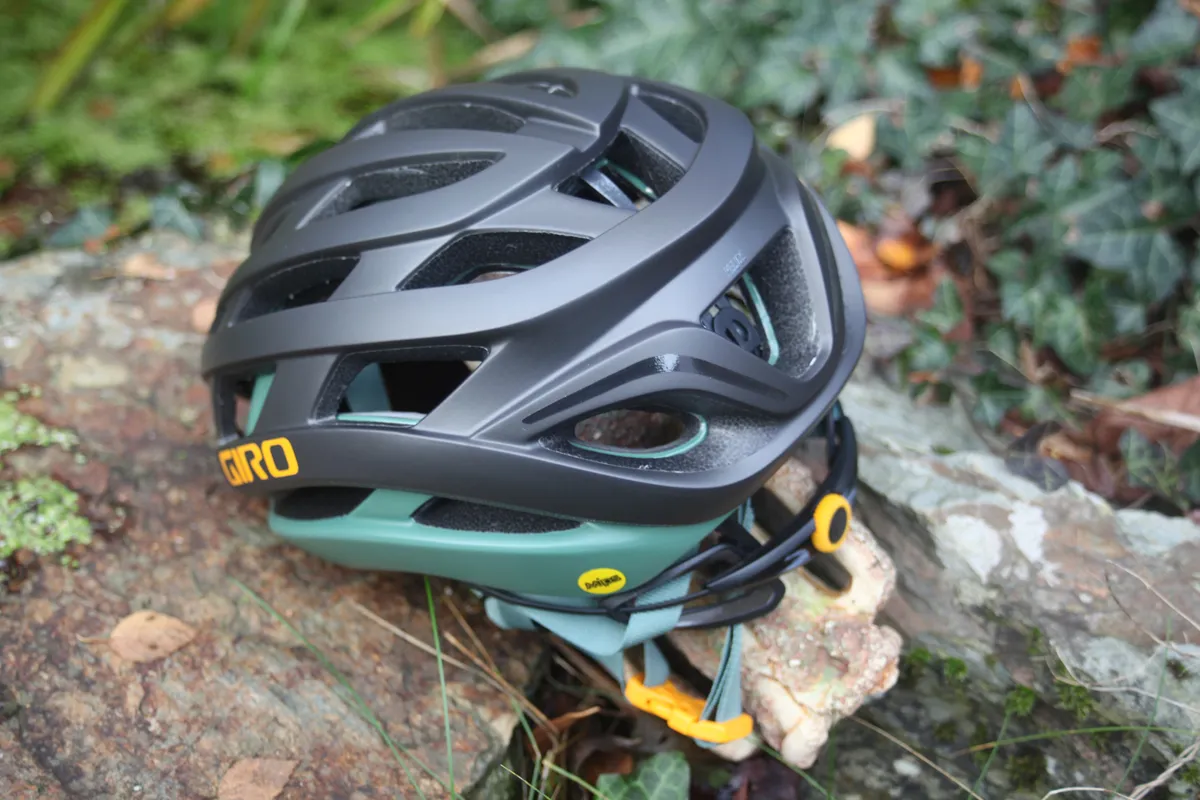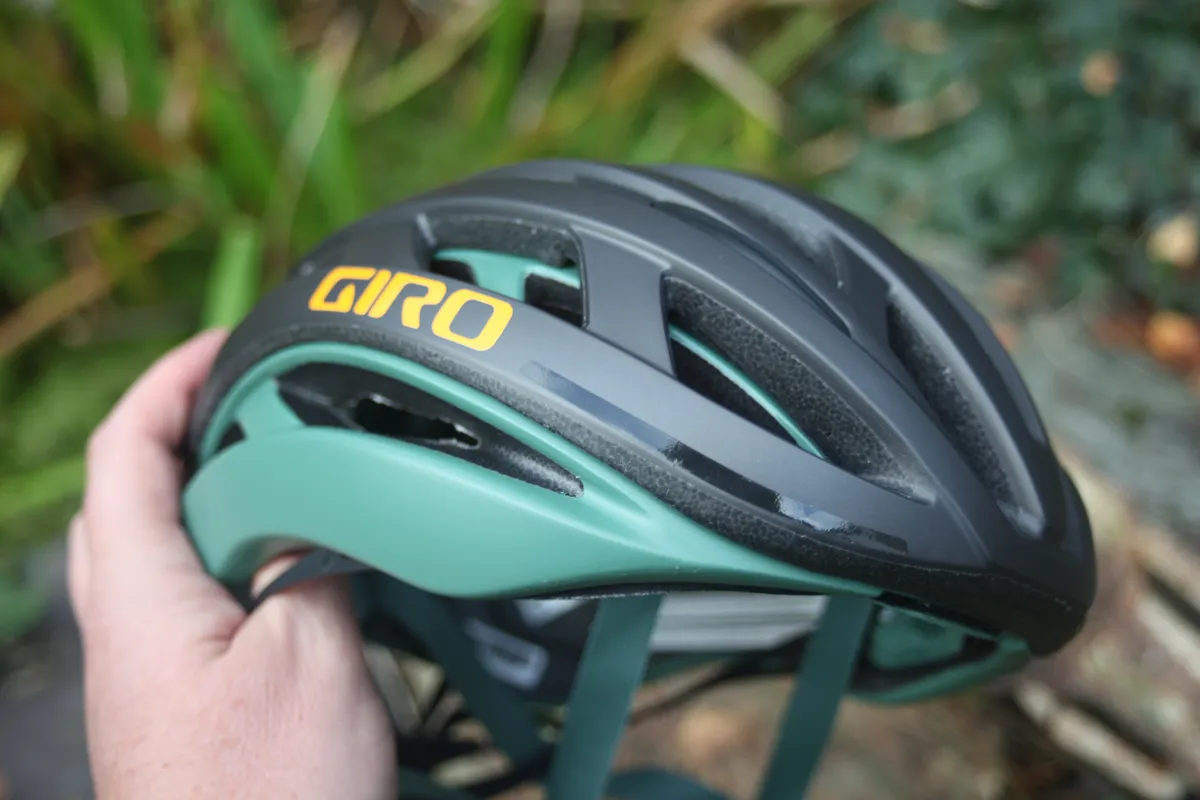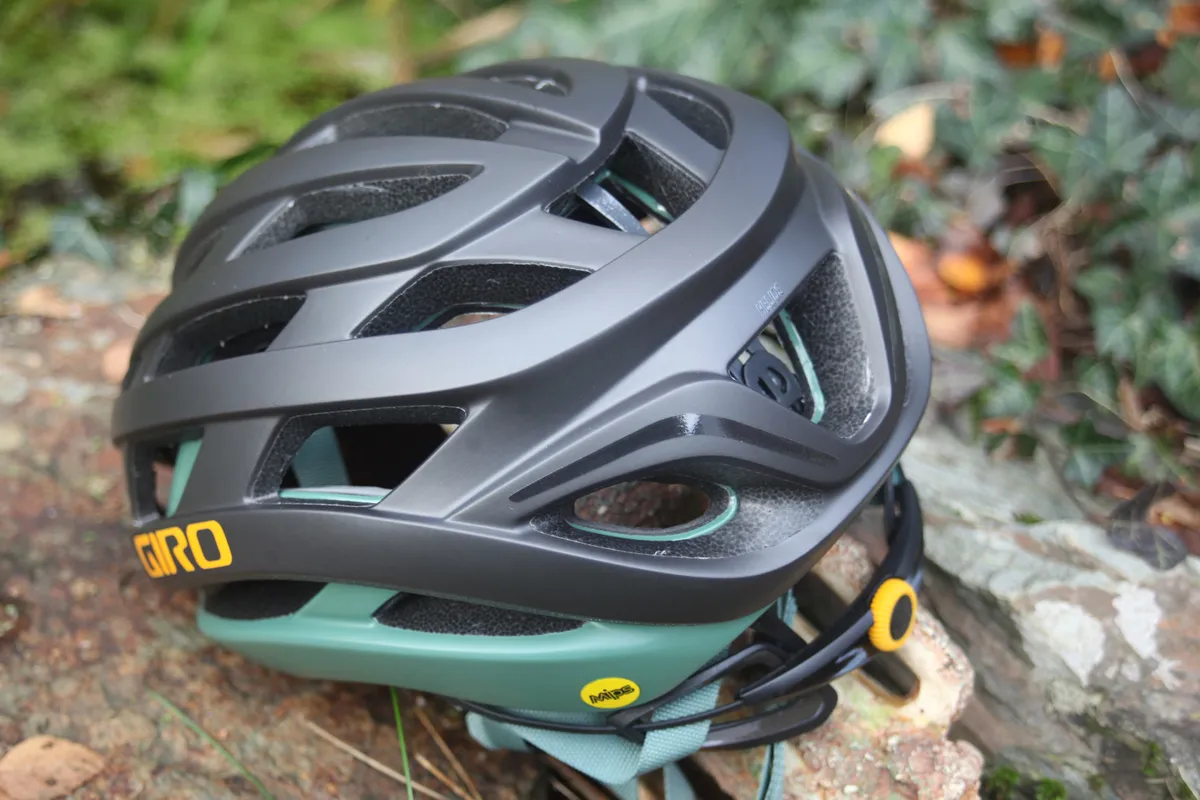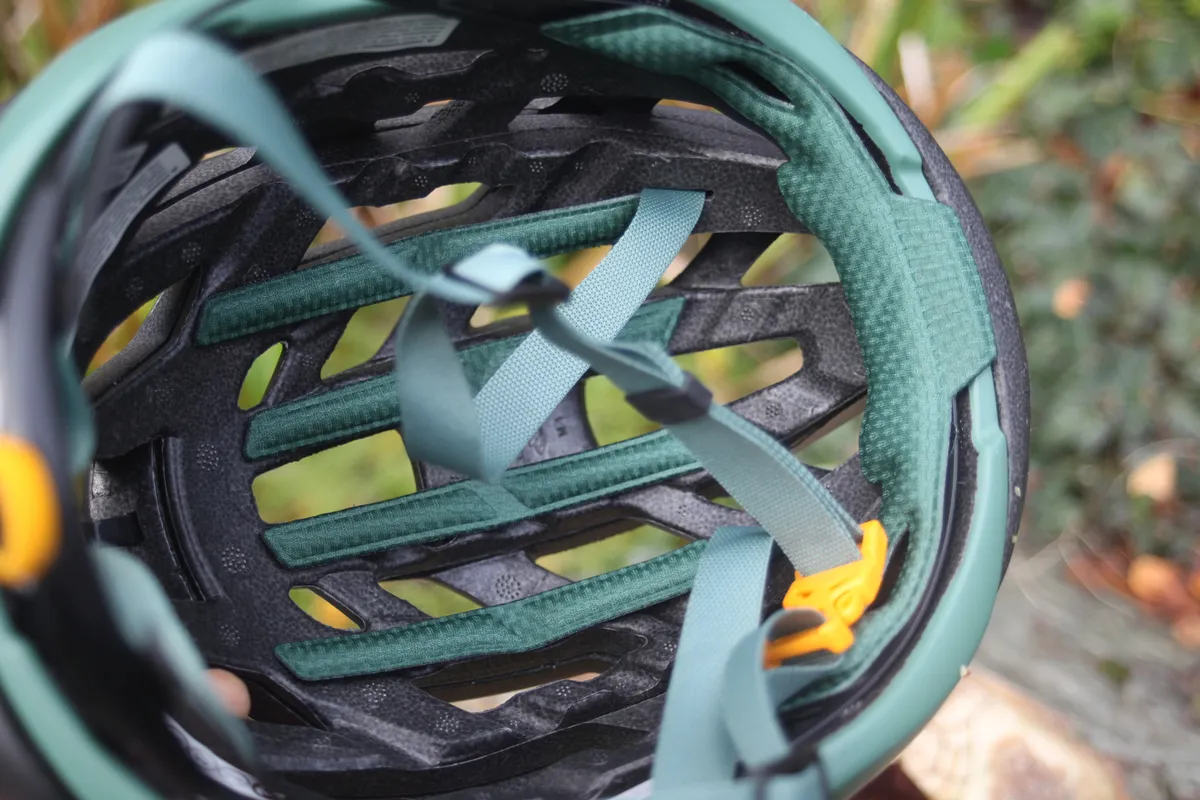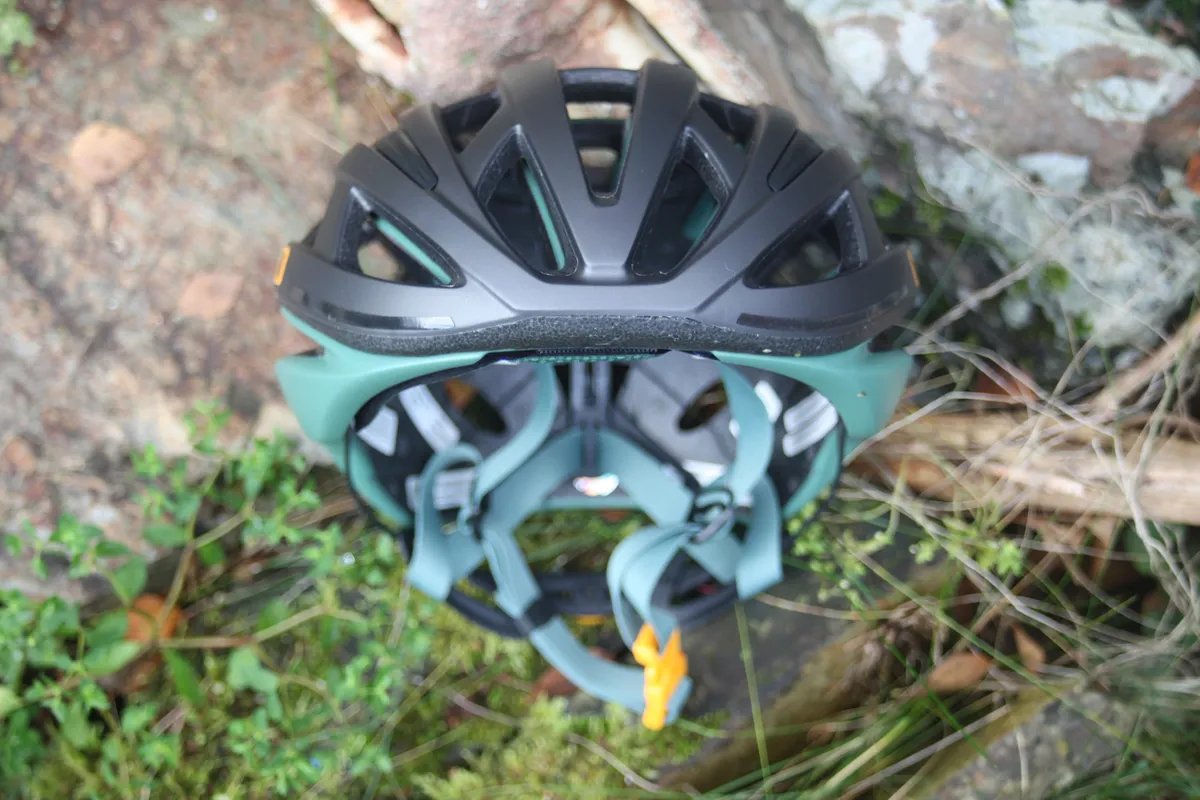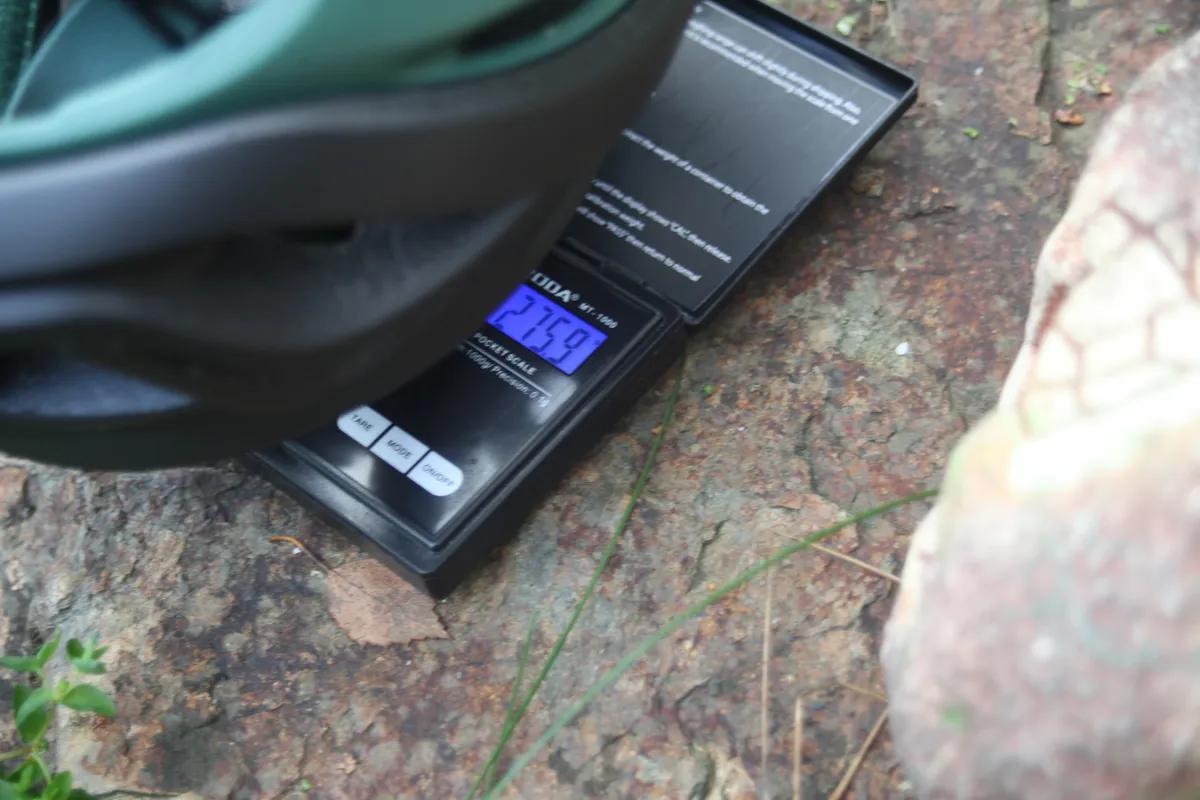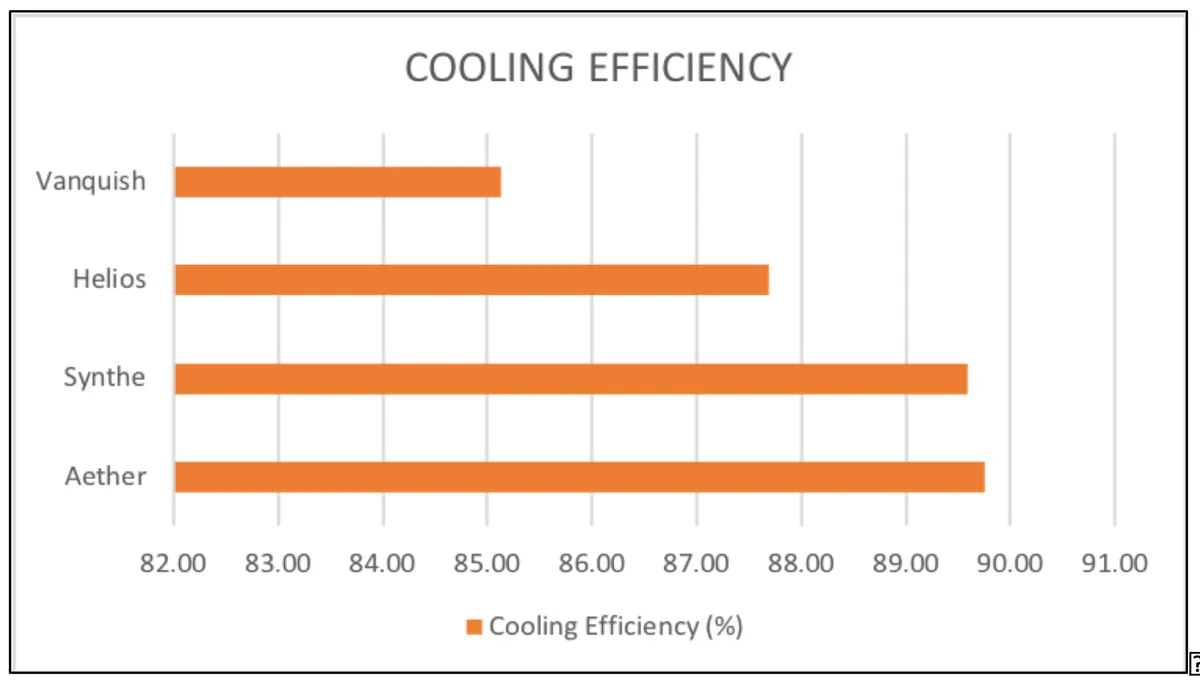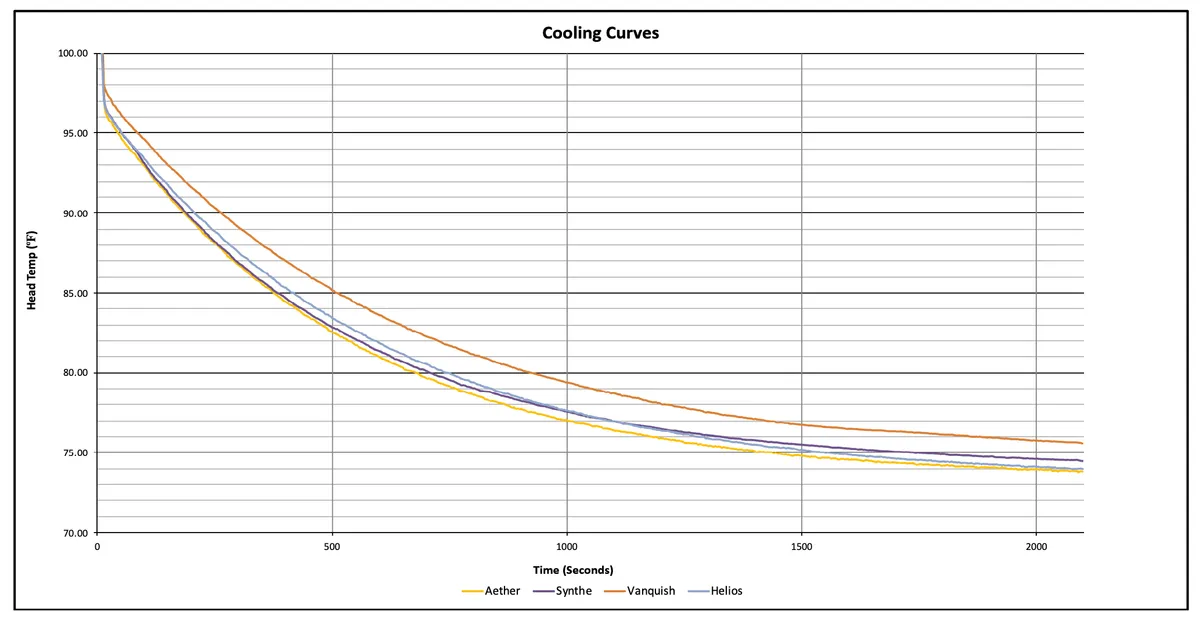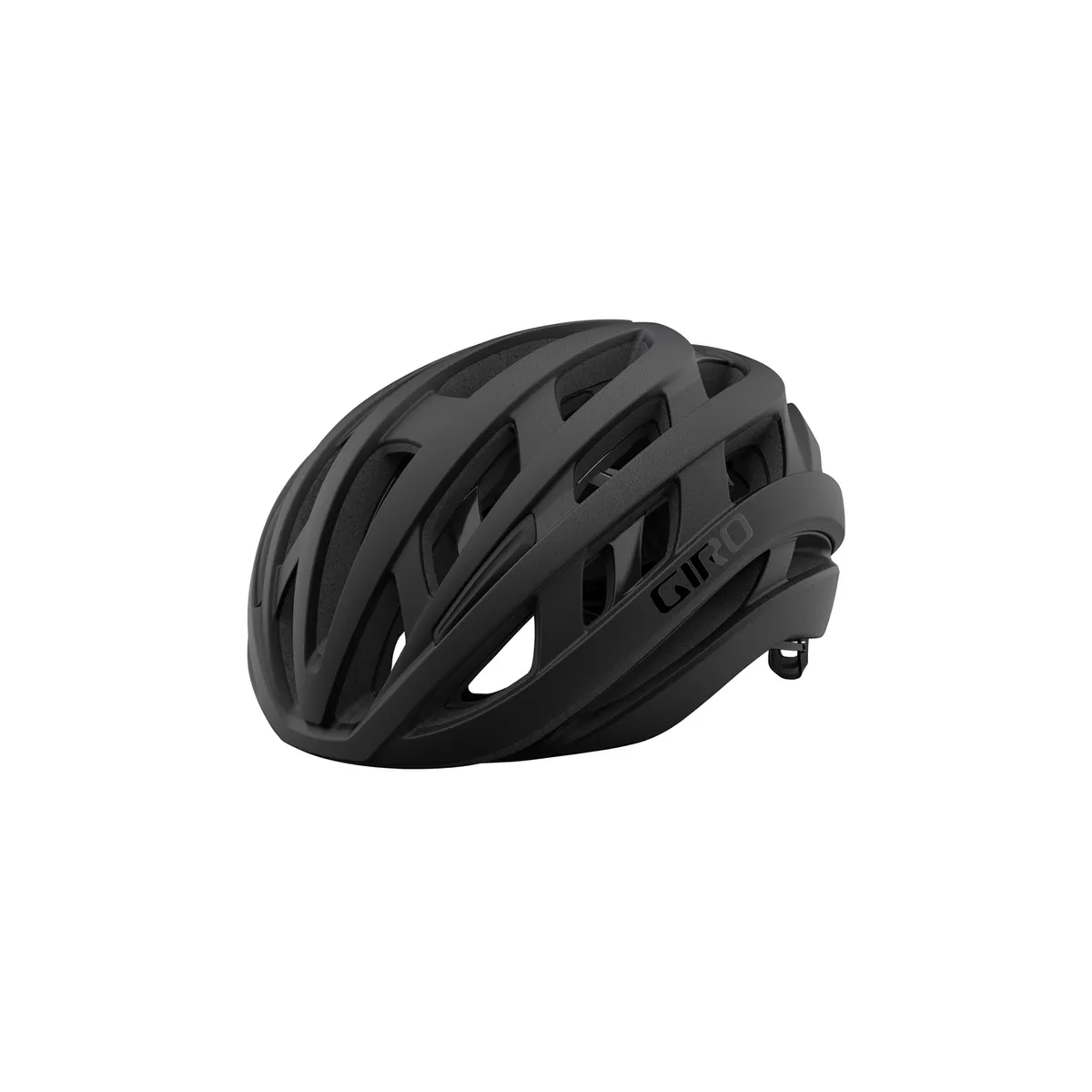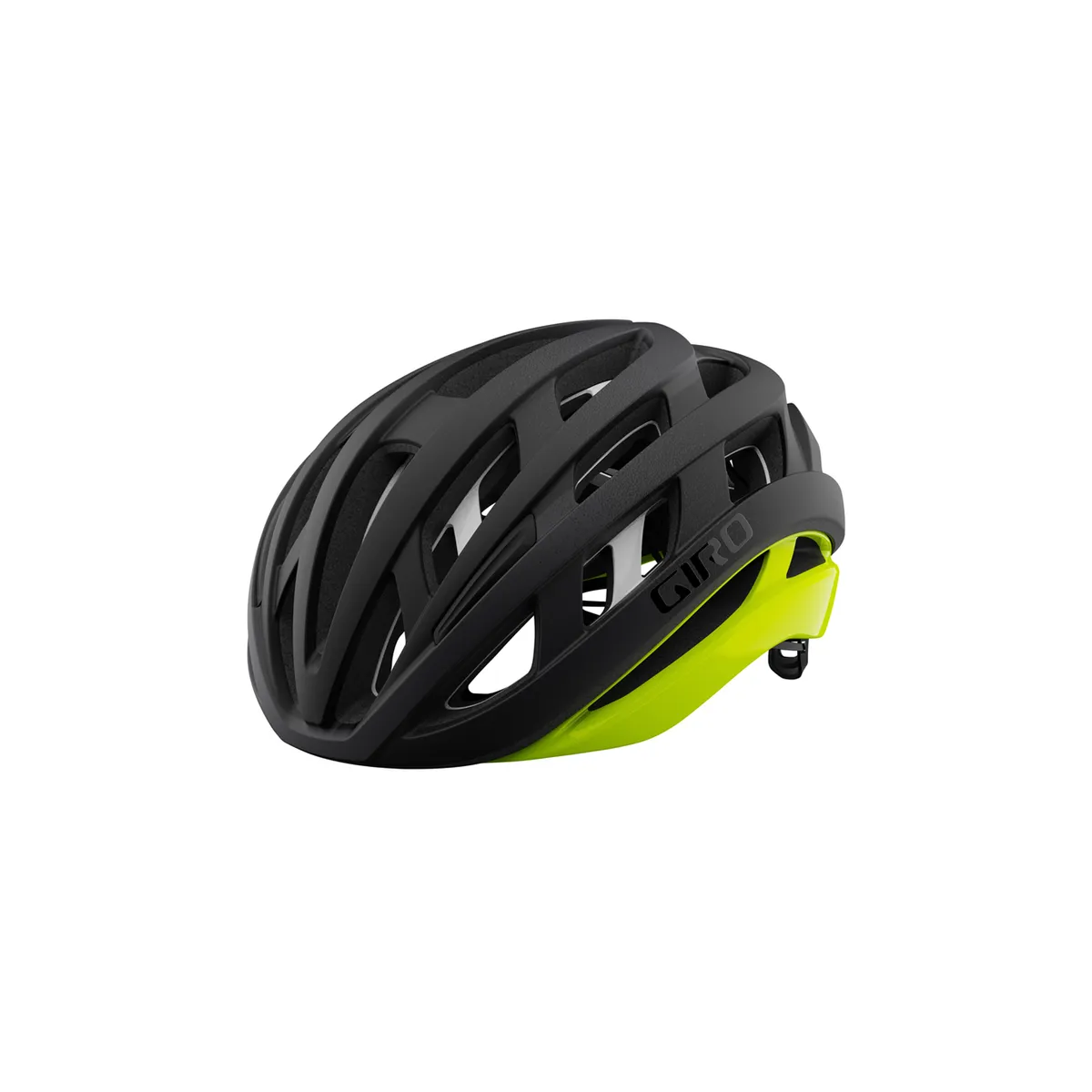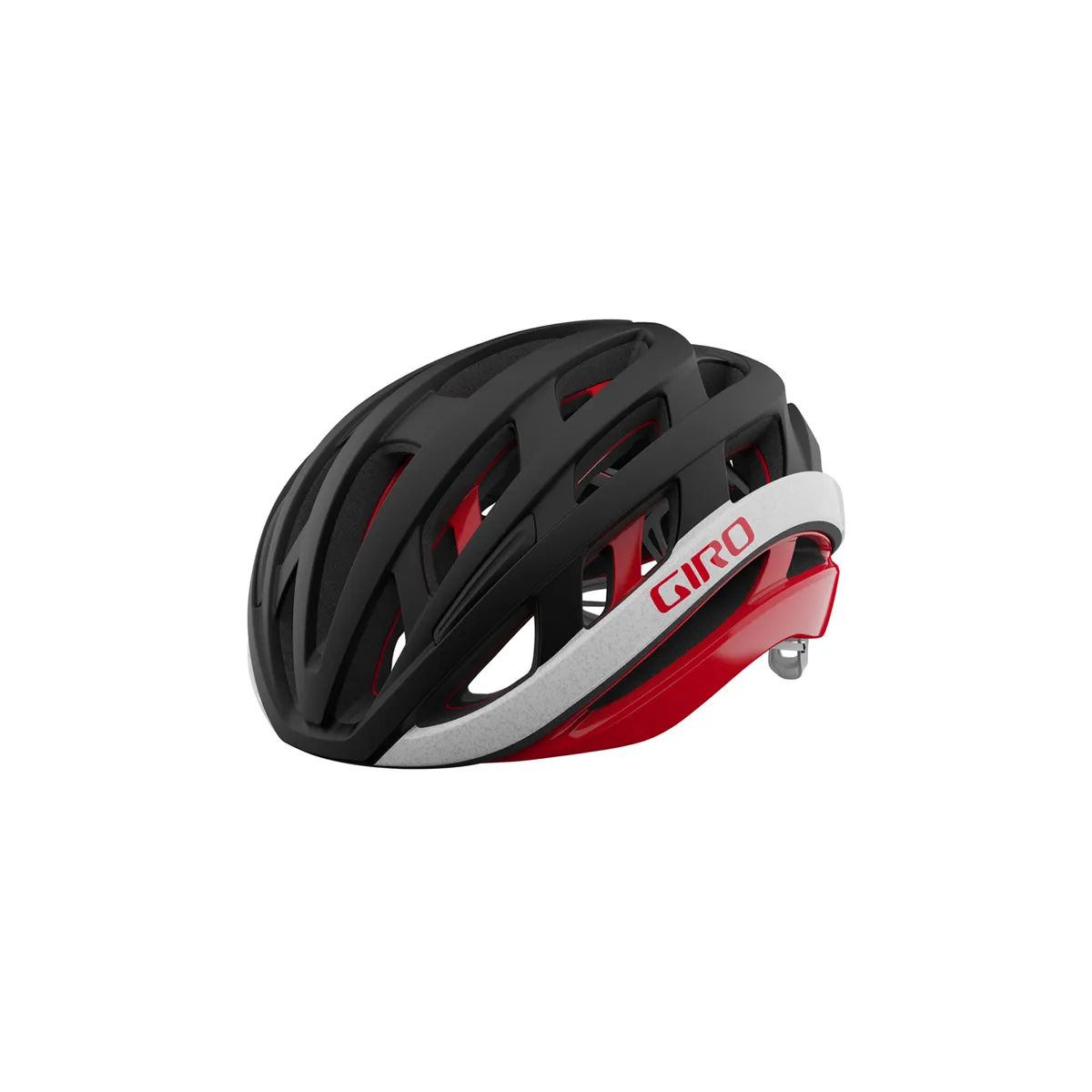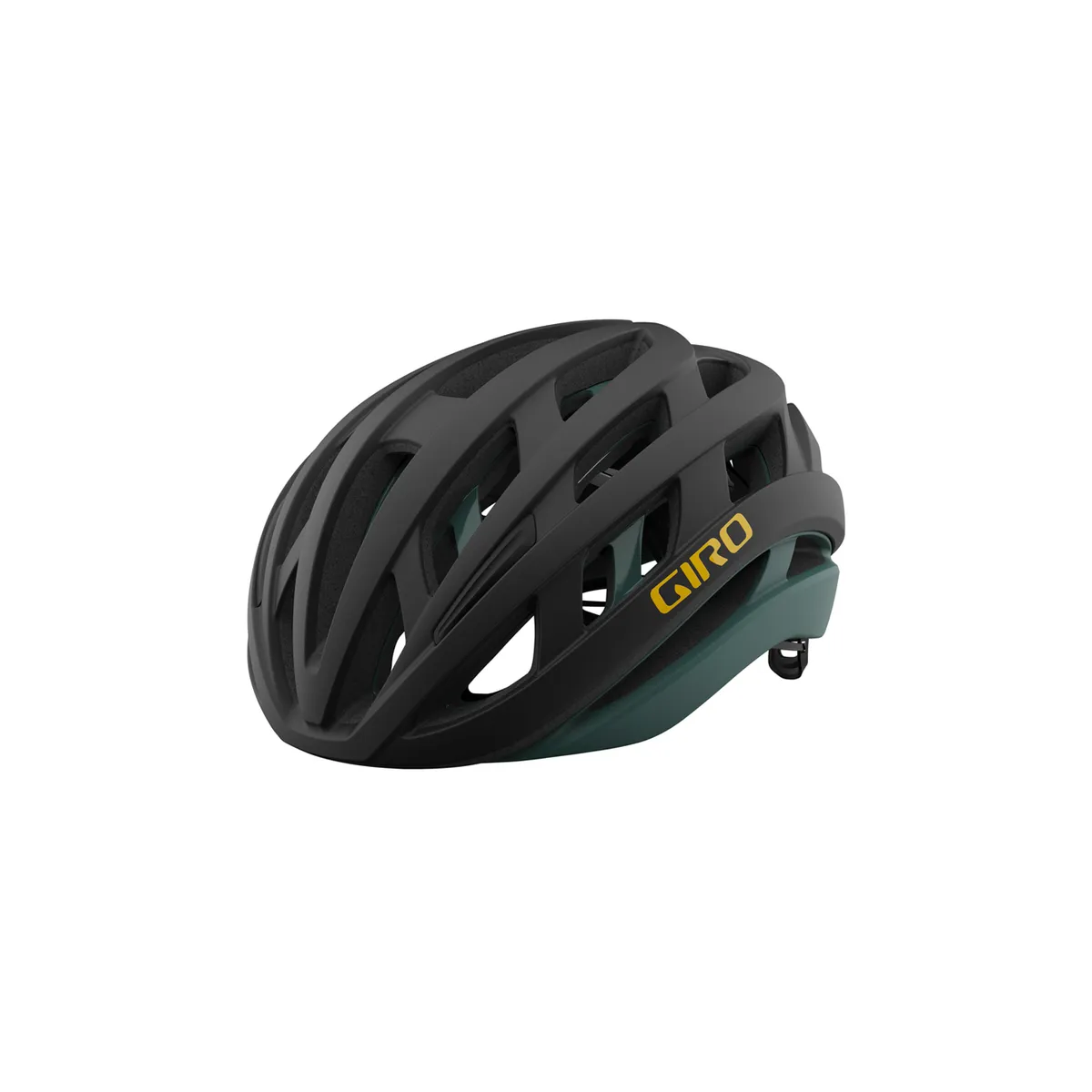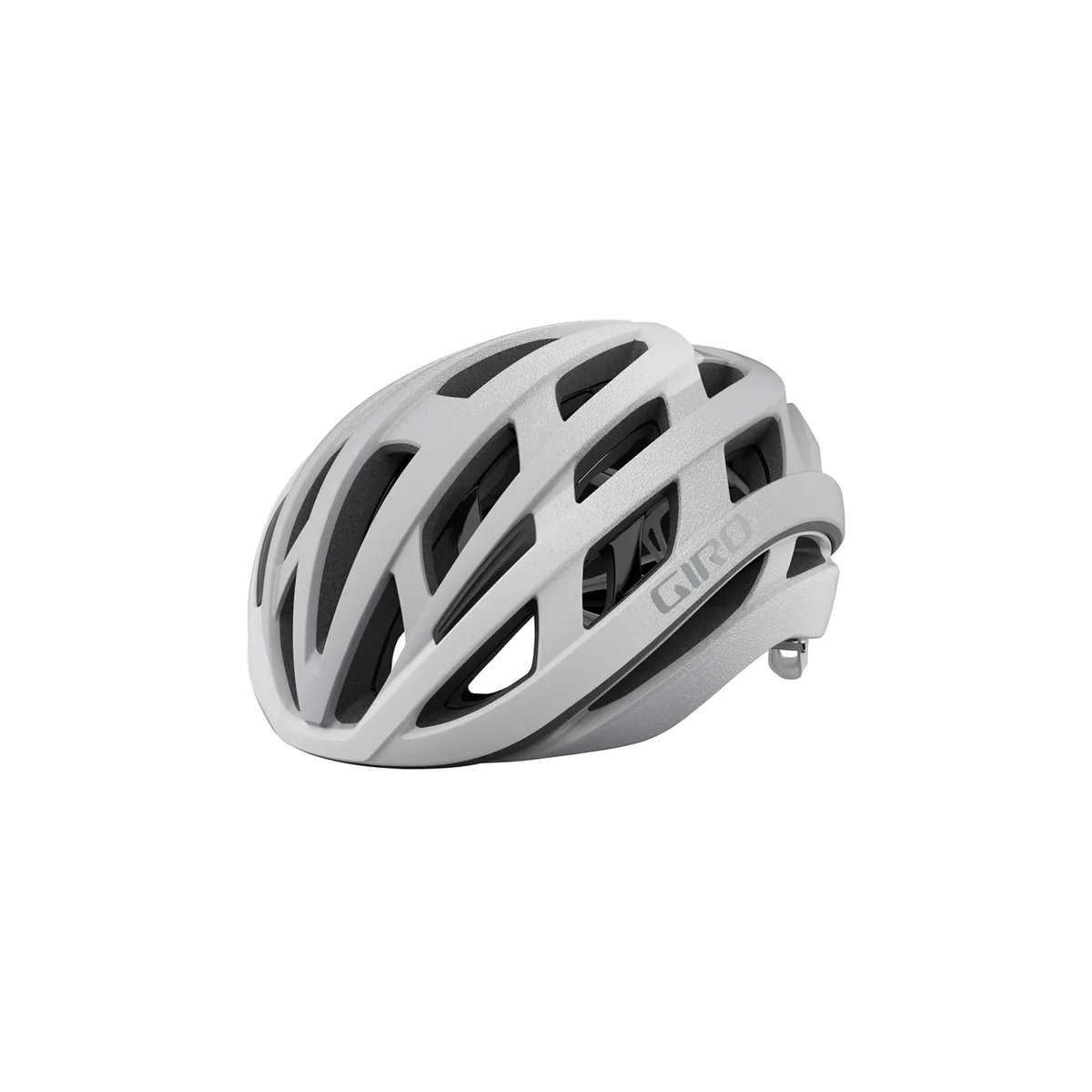Giro’s new Helios Spherical is its latest helmet to include the company’s Spherical Technology, which uses a unique ball-and-socket design alongside MIPS’s brain protection system.
The Spherical system takes the MIPS ‘slip-plane’ idea and instead of making a thin-liner that sits between helmet and pads it uses two EPS foam liners that are held together with a ball-and socket design and elastomer ‘anchors’.
This allows the two liners to slide independently of each other and is claimed to vastly reduce harmful rotational forces.
The new Helios was developed alongside MIPS at Giro’s DOME labs at its Scotts Valley HQ.
The three things you should know about Helios
- Spherical design integrates MIPS protection into a unique two-piece EPS foam construction
- More aerodynamic than both of Giro’s pro-level helmets: Synthe and Aether
- Low weight and low volume design
Until now we’d only seen Giro’s unique two-piece shell with its ball-and-socket construction on its pro-level Aether helmet.
The Aether is designed to provide maximum cooling at pro-rider level speeds and conditions, so for those still wanting the highest level of protection and comparable cooling, but not riding fast enough to feel the benefits, the Aether may not be the ideal choice.
Giro’s brand manager Eric Ritcher told us: “We’ve found that riders over the years have increasingly chosen helmets with additional protection tech. With that choice they sometimes make a trade-off. Gaining added protection but compromising on fit, comfort, light weight and cooling. With the Spherical Protection Technology we can achieve all of those goals without compromise.”
Giro’s other premium helmets, the Aether and Synthe, are all about aerodynamic and cooling efficiency at speed, but the mantra behind the Helios is safety in a more appealing, stylish package that maxes out on traditional safety elements too.
Slower cooling design
The design is much more compact than the other premium offerings from Giro, with a closer, slimmer profile that it says should appeal to riders of all disciplines. The colour palette is likely to appeal to more style conscious gravel fans too.
The trend in ‘pro’ helmets has been for fewer vents that are larger for improved cooling and a more closed aero-shape, mainly designed for riders with speed on their mind. The Helios bucks both these trends with an outer shell with 28 smaller-sized vents (15 forward facing).
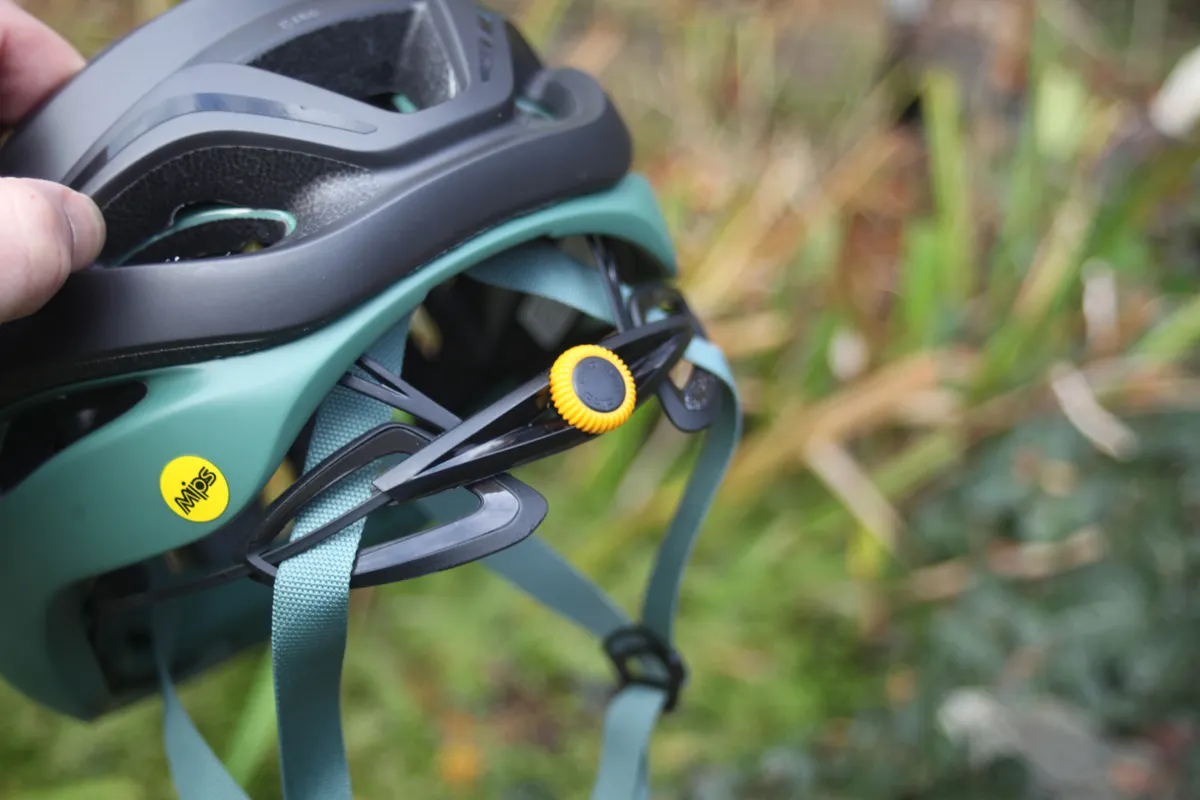
The placement of the vents has slower speed riding in mind, designed to evaporate heat rather than fast-cooling air being pushed through channelled vents. Despite the smaller size of vents, the Helios still feels airy to wear.
Fit adjustment is taken care of by Giro’s RocLoc Air fit cradle, which offers 35mm of vertical adjustment along with micro-horizontal adjustment from its knurled dial.
Smaller vents = smaller weight
One of the benefits of having smaller vents is that Giro doesn’t have to reinforce the Helios as it does the Aether. That helmet’s polycarbonate ‘aura reinforcing arch’ adds weight to improve strength, and without this requirement the Helios weighs in at 10g less than the Aether size for size.
Giro tells us that weight is also able to be minimised because of the twin-EPS-liner design, allowing it to vary density of the EPS between the two and between areas of the individual liners too.
The weight of our sample is 275.9g for a medium, which is impressive for a MIPS-equipped helmet.
Wind assisted
Although Giro hasn’t set out to make the Helios an ‘aero’ design, it is claimed to perform well in the wind tunnel, due to its compact size.
Up against the premium road-focused Giro Synthe, Aether and Vanquish, the Helios achieved an 80/20* score of 296.2, which is highly efficient for an open-style road helmet with aggressive ventilation according to Giro.
This figure is lower than both the Synthe (302.2) and Aether (305.8), making it a more aerodynamic helmet in these conditions. So while it’s not designed to be an aero helmet, the Helios still performs well and could be a good option for riders that value aerodynamic efficiency.
*The 80/20 WAD score relates to Giro’s testing protocols of wind averaged coefficient of drag calculations using drag values between 0 and 15 degrees yaw at 5-degree increments.
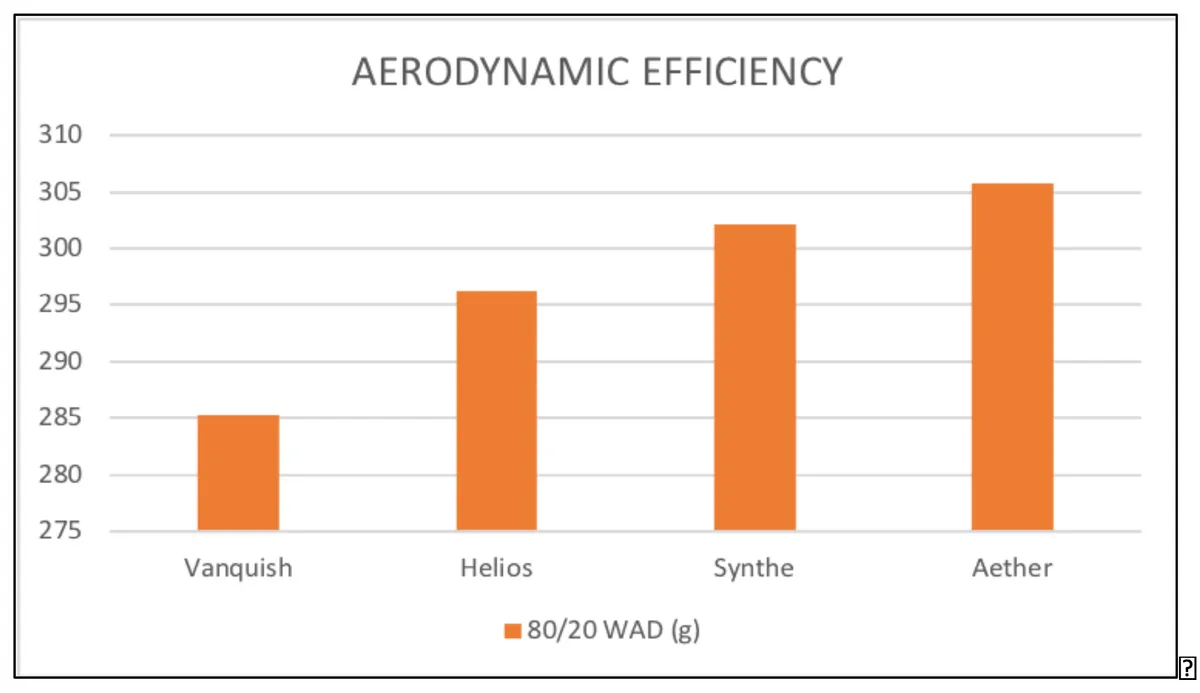
Giro also tested cooling efficiency of the Helios and the results showed that the helmet was only 2 per cent less efficient in air-moving across the head to cool compared to the other helmets, which Giro claims is a difference most riders won’t really notice.
Giro Helios Spherical availability and pricing
The new Helios should be available from Giro dealers from today priced at $250/ €249.95 / £229 / AU$399.
